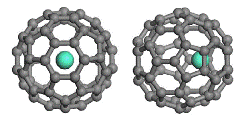Department of Chemistry
Date of this Version
9-1-2007
Abstract
Nanostructurally stabilized zirconium oxide (NSZ) hard transparent films were produced without chemical stabilizers by the ion beam assisted deposition technique (IBAD). A transmission electron microscopy study of the samples produced below 150 °C revealed that these films are composed of zirconium oxide (ZrO2) nanocrystallites of diameters 7.5 ± 2.3 nm. X-ray and selected-area electron diffraction studies suggested that the as-deposited films are consistent with cubic phase ZrO2. Rutherford backscattering spectroscopy (RBS) indicated the formation of stoichiometric ZrO2. The phase identity of these optically transparent NSZ films was in agreement with cubic ZrO2, as indicated by the matching elastic modulus values from the calculated results for pure cubic zirconium oxide and results of nanoindentation measurements. Upon annealing in air for 1 h, these NSZ films were found to retain most of their room temperature deposited cubic phase x-ray diffraction signature up to 850 °C. Size effect and vacancy stabilization mechanisms and the IBAD technique are discussed to explain the present results.


Comments
Published in Nanotechnology 18 (2007) 415702 (6 pp); doi:10.1088/0957-4484/18/41/415702. Online at http://stacks.iop.org/Nano/18/415702 Copyright © 2007 IOP Publishing Ltd. Used by permission.